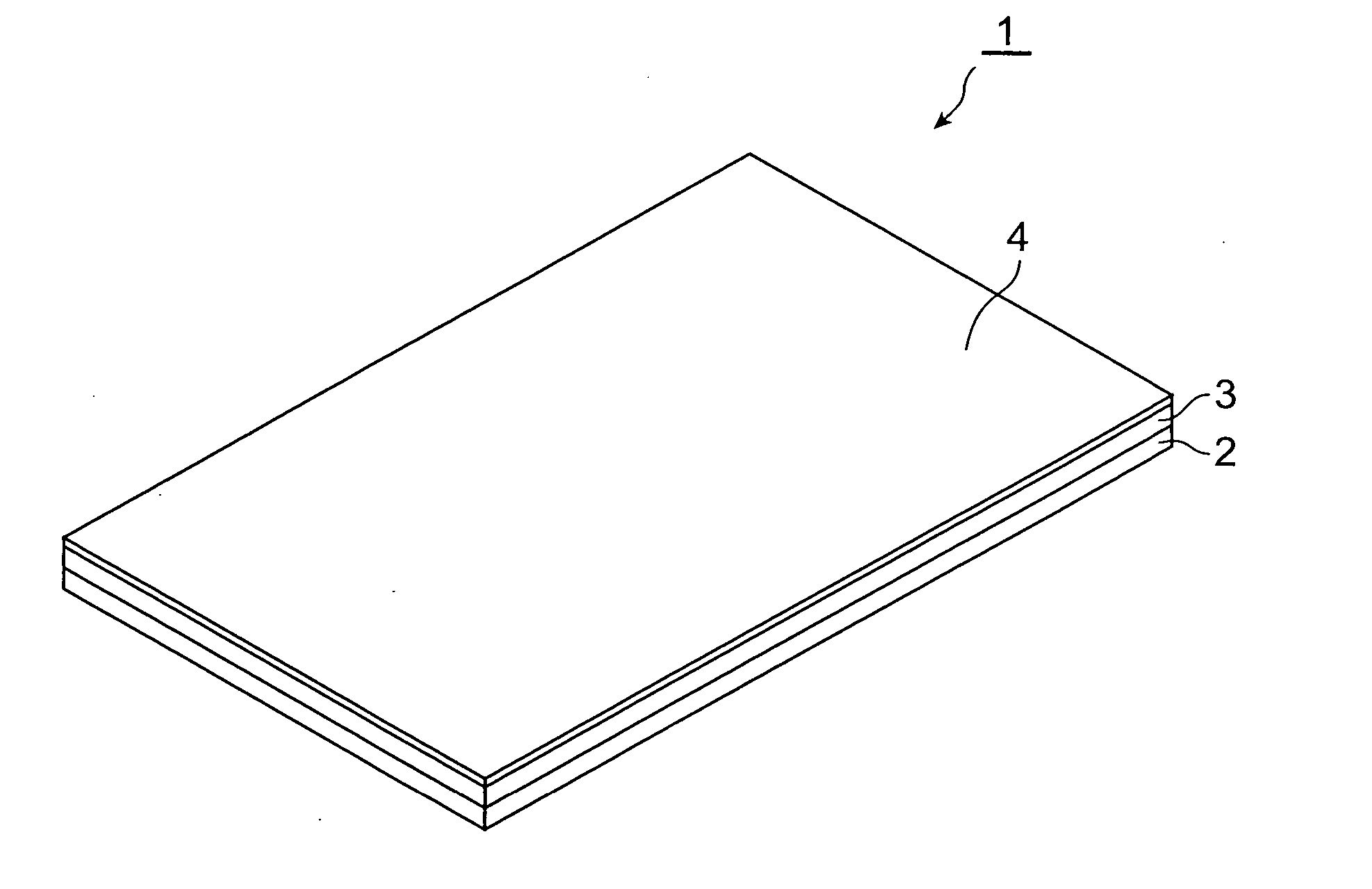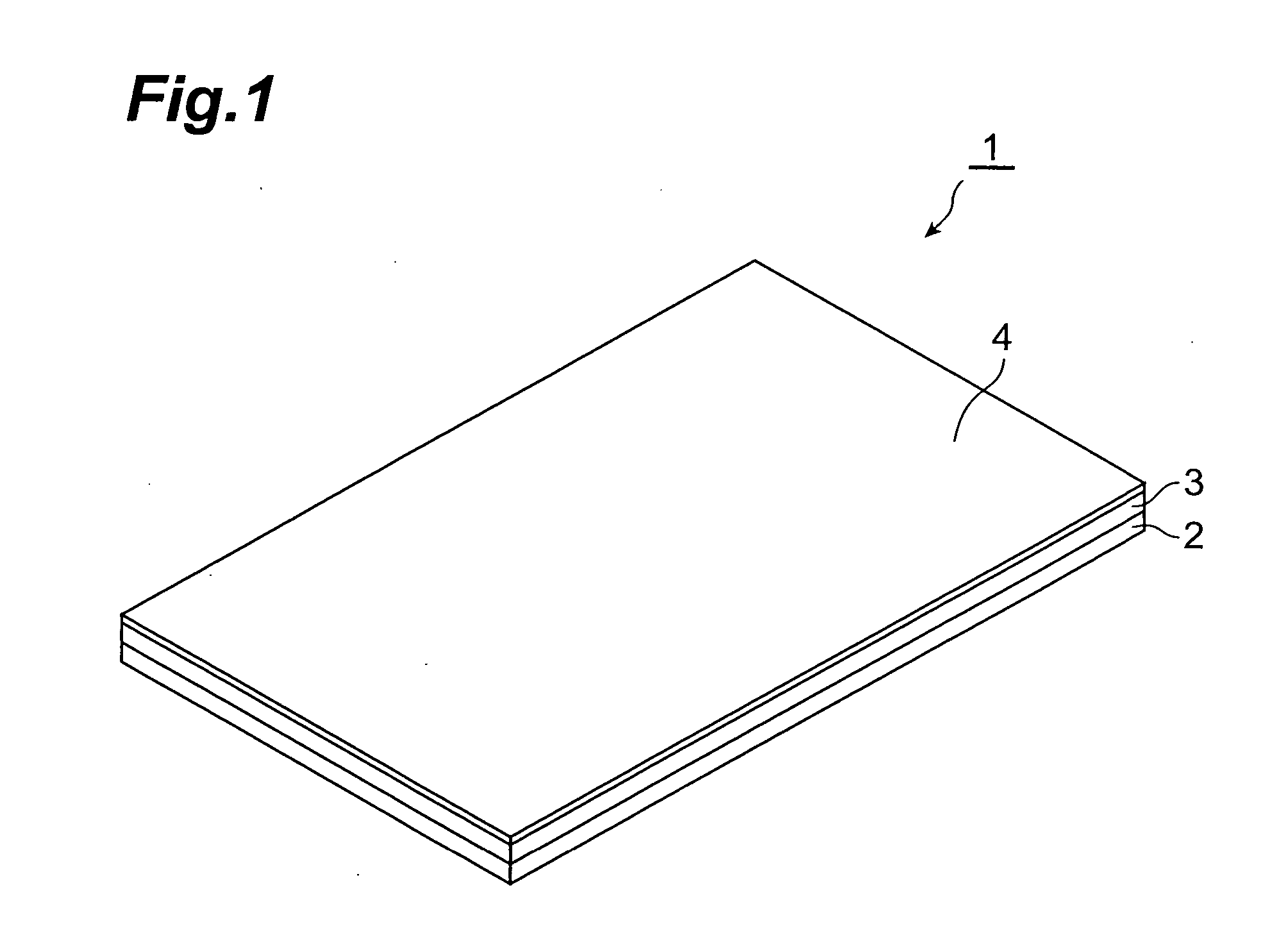Pasting Preparation
a technology of patch preparation and saline solution, which is applied in the direction of bandages, animal repellents, drug compositions, etc., can solve the problems of affecting the absorption of the drug, and being susceptible to the first pass effect of liver, etc., and achieves the effect of superior drug percutaneous absorption
- Summary
- Abstract
- Description
- Claims
- Application Information
AI Technical Summary
Benefits of technology
Problems solved by technology
Method used
Image
Examples
example 1
[0114] First, 4.0 parts by weight of fentanyl citrate, 1.0 parts by weight of sodium acetate, 0.7 parts by weight of acetic acid, 3.0 parts by weight of pyrothiodecane and 23.6 parts by weight of liquid paraffin were mixed using a mortar to obtain a mixture. Next, a solution comprising 20.0 parts by weight of styrene-isoprene-styrene block copolymer (SIS), 10.0 parts by weight of polyisobutylene (PIB) and 38.0 parts by weight of alicyclic saturated hydrocarbon resin (trade name: Arkon P-100, Arakawa Chemical Industries) dissolved in a solvent in the form of toluene was mixed with the above-mentioned mixture to prepare an adhesive base.
[0115] Next, after coating the prepared adhesive base onto a release paper to form a coated film, this coated film was allowed to stand undisturbed for 10 minutes at 80° C. followed by removing the solvent from the coated film by drying to form an adhesive layer (thickness: approximately 100 μm). Moreover, a backing made of PET was laminated onto the ...
example 2
[0116] First, 15.0 parts by weight of oxybutynin hydrochloride, 0.7 parts by weight of trisodium citrate, 2.0 parts by weight of acetic acid and 16.9 parts by weight of liquid paraffin were mixed using a mortar to obtain a mixture. Next, a solution comprising 27.0 parts by weight of styrene-isoprene-styrene block copolymer (SIS), 3.0 parts by weight of acrylic adhesive (trade name: Duro-Tak 87-4098, National Starch & Chemical Japan) and 36.3 parts by weight of alicyclic saturated hydrocarbon resin (trade name: Arkon P-100, Arakawa Chemical Industries) dissolved in a solvent in the form of toluene was mixed with the above-mentioned mixture to prepare an adhesive base.
[0117] Next, a patch preparation was produced in the same manner as Example 1 using the prepared adhesive base.
example 3
[0118] First, 15.0 parts by weight of oxybutynin hydrochloride, 0.7 parts by weight of trisodium citrate, 2.5 parts by weight of acetic acid and 16.2 parts by weight of liquid paraffin were mixed using a mortar to obtain a mixture. Next, a solution comprising 27.0 parts by weight of styrene-isoprene-styrene block copolymer (SIS), 3.0 parts by weight of acrylic adhesive (trade name: Duro-Tak 87-4098, National Starch & Chemical Japan) and 36.3 parts by weight of alicyclic saturated hydrocarbon resin (trade name: Arkon P-100, Arakawa Chemical Industries) dissolved in a solvent in the form of toluene was mixed with the above-mentioned mixture to prepare an adhesive base.
[0119] Next, a patch preparation was produced in the same manner as Example 1 using the prepared adhesive base.
PUM
| Property | Measurement | Unit |
|---|---|---|
| temperature | aaaaa | aaaaa |
| thickness | aaaaa | aaaaa |
| volume | aaaaa | aaaaa |
Abstract
Description
Claims
Application Information
 Login to View More
Login to View More - R&D
- Intellectual Property
- Life Sciences
- Materials
- Tech Scout
- Unparalleled Data Quality
- Higher Quality Content
- 60% Fewer Hallucinations
Browse by: Latest US Patents, China's latest patents, Technical Efficacy Thesaurus, Application Domain, Technology Topic, Popular Technical Reports.
© 2025 PatSnap. All rights reserved.Legal|Privacy policy|Modern Slavery Act Transparency Statement|Sitemap|About US| Contact US: help@patsnap.com


